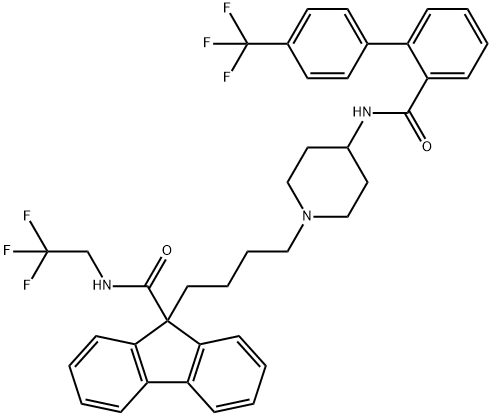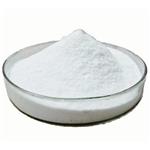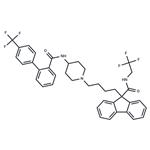Lomitapide was approved by the US FDA in December 2012 for the treatment
of patients with familial hypercholesteremia (referred to as HoFH) in conjunction with a low-fat diet andother lipid-lowering treatments. Lomitapide was discovered from a high-through put
screen that identified several structurally distinct MTP inhibitors. Combination
of key structural features from two structurally distinct HTS hits provided potent MTP inhibitors. Parallel analog synthesis led to lomitapide as an optimized structure. Lomitapide was synthesized via alkylation of 9-fluorenylcarboxylic acid with 1,4-dibromobutane which, after trifluoroethylamide formation, provided a bromide intermediate that was displaced by Boc-4-aminopiperidine. Introduction of the 4'-trifluoromethylbiphenylcarboxamide gave lomitapide, which
was found to inhibit MTP with an IC50 of 0.5 nM and to exhibit good
cholesterol-lowering efficacy in Sprague–Dawley rats (intravenous and oral
ED50~0.2 mg/kg).
Bristol-Myers Squibb (United States)
Lomitapide has been used as a microsomal triglyceride transfer protein (MTP) inhibitor to study its effects on very-low-density lipoproteins (VLDL) export in mouse hepatocytes.
ChEBI: Lomitapide is a member of the class of benzamides obtained by formal condensation of the carboxy group of 4'-(trifluoromethyl)biphenyl-2-carboxylic acid with the primary amino group of 9-[4-(4-aminopiperidin-1-yl)butyl]-N-(2,2,2-trifluoroethyl)-9H-fluorene-9-carboxamide. Used (as its mesylate salt) as a complement to a low-fat diet and other lipid-lowering treatments in patients with homozygous familial hypercholesterolemia. It has a role as an anticholesteremic drug and a MTP inhibitor. It is a member of piperidines, a member of fluorenes, a member of benzamides and a member of (trifluoromethyl)benzenes. It is a conjugate base of a lomitapide(1+).
Lomitapide is an inhibitor of microsomal triglyceride transfer protein (MTP). Lomitapide has been shown to be highly effective in reducing LDL-cholesterol and triglycerides, and has been aproved for treatment of homozygous familial hypercholesterolemia.



